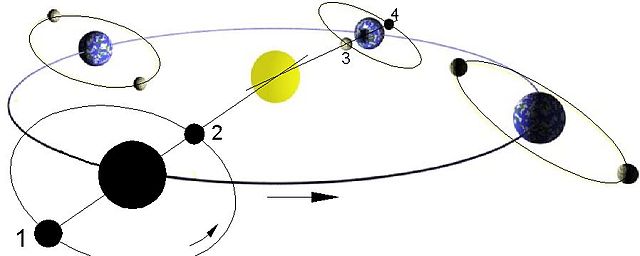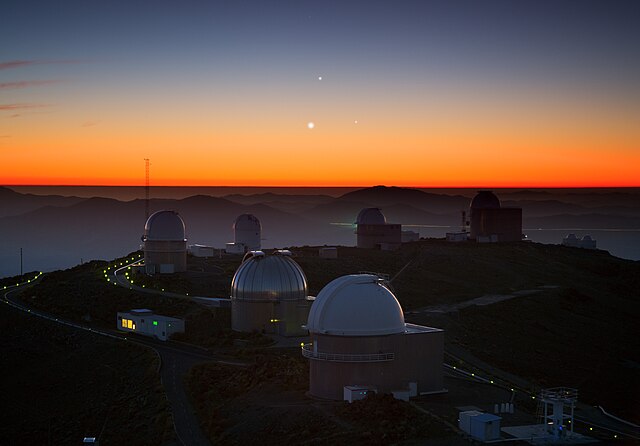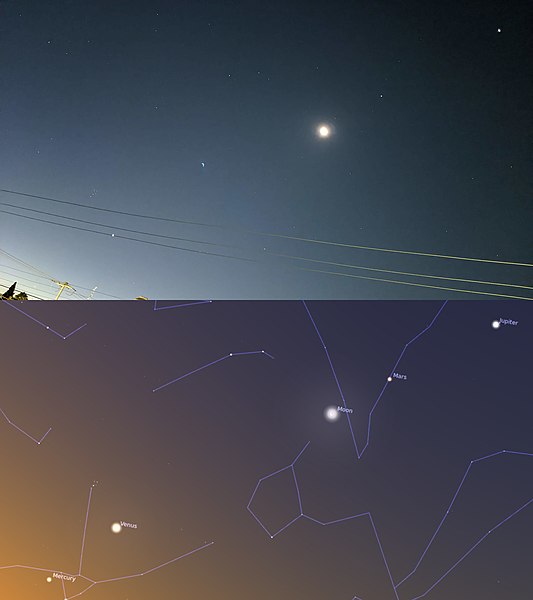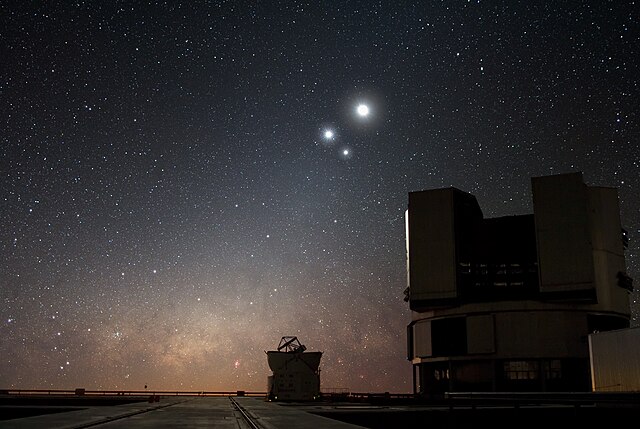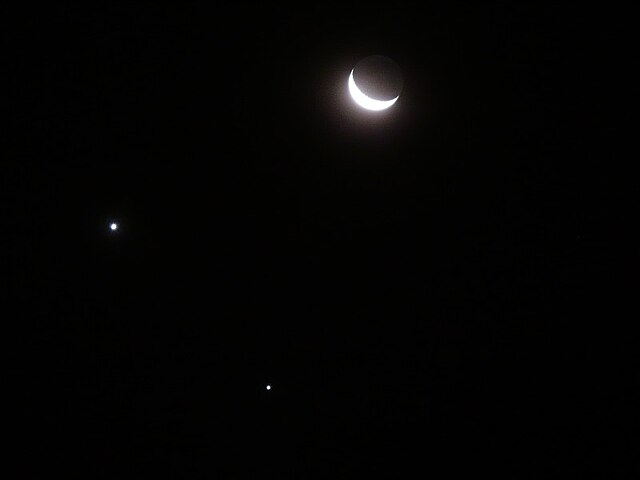In astronomy, a syzygy is a roughly straight-line configuration of three or more celestial bodies in a gravitational system.
A syzygy occurs during eclipses (numbers 1, 2, 3, 4).
Jupiter (top), Venus (lower left), and Mercury (lower right) above La Silla Observatory, Chile (May 26, 2013)
Apparent planetary alignment involving Mercury, Venus, Jupiter, and Saturn; the Moon is also shown, as the brightest object.
In astronomy, a conjunction occurs when two astronomical objects or spacecraft appear to be close to each other in the sky. This means they have either the same right ascension or the same ecliptic longitude, usually as observed from Earth.
Visual conjunction between the Moon and the planet Venus, the two brightest objects in the night sky
A conjunction of Mars and Jupiter in the morning of 1 May 2011, when, about an hour before sunrise, five of the Solar System's eight planets and the Moon could be seen from Cerro Paranal, Chile.
In the night sky over ESO's Very Large Telescope (VLT) observatory at Paranal, the Moon shines along with two bright companions: Venus and Jupiter.
Conjunction of Venus (left) and Jupiter (bottom), with the nearby crescent Moon, seen from São Paulo, Brazil, on 1 December 2008

